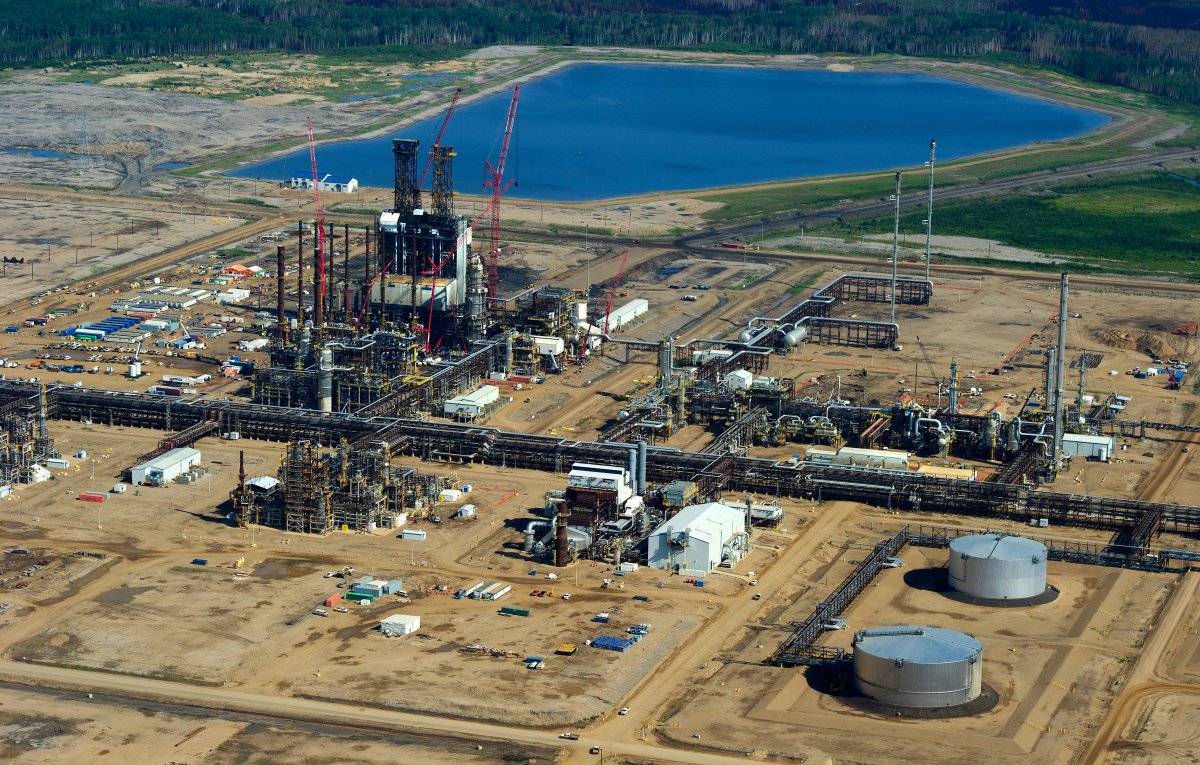Since last summer, up to 70 per cent of the carbon dioxide produced at the NWR Sturgeon Refinery northeast of Edmonton has been pumped into the ground.

It’s carried to a storage facility via the Alberta trunk line, a pipeline that took more than a decade and hundreds of millions of provincial and federal government dollars to build.
In the first year, more than a million tonnes of carbon dioxide has been stored underground. It’s an example of how the oil and gas sector can decarbonize, and Canada’s five largest oil producers believe it can be done across the entire oilsands within the next three decades.
“If Canada doesn’t find a way to decarbonize its oil and gas sector, there just simply won’t be a market for the product,” said Chris Severson-Baker, Alberta regional director for the Pembina Institute.
“If we want to stay in the business of providing oil and gas to a market that is declining but also demanding a better product from a carbon perspective, then we’re going to have to do a number of these things.”
READ MORE: Several Canadian oilsands operators commit to become net zero emitters by 2050

Get daily National news
It’s why oilsands giants Suncor, Cenovus Energy, Canadian Natural, MEG Energy and Imperial launched the Oilsands Pathways to Net Zero initiative earlier this year.
The plan, which aims to get the industry to net-zero by 2050, is anchored by a multi-billion dollar carbon capture and storage plan that would see a trunk line built between oilsands facilities in northern Alberta to an underground storage hub near Cold Lake.
“There’s nobody better to do this than the oil and gas companies, but it’s going to take some time in order to put this together,” said Mike Monea, President of Monea CCS Services, a leading expert on carbon and capture and storage technology.
- Calgary’s mayor asks province to salvage parts of halted Green Line transit project
- Moraine Road RV residents get temporary extension while city seeks long-term solution
- Calgary police searching for sexual assault suspect after attack at swimming hole
- Calgary’s termination of Green Line adds extra frustration for expropriated Eau Claire residents
“Without carbon capture and storage, we will never be able to meet our (emission reduction) commitments.”
The Oilsands Pathways to Net Zero proposal would reduce emissions by 68 megatonnes by 2050, which represents about a nine per cent reduction of Canada’s total greenhouse gas emissions (when compared to 2019 levels), but the plan comes with a hefty price tag as well.
It would cost $75 billion, and the industry says it’s not prepared to foot the bill alone.
READ MORE: O’Toole supports reviving Northern Gateway pipeline in appeal to indigenous communities
The companies involved with the Pathways Initiative declined a request for an interview, but in an e-mailed statement to Global News, a spokesperson pointed to similar investments made by governments in the U.K. and Norway.
“Following the election, we look forward to working with the federal government to develop an achievable plan to net-zero that will kick start the development of clean technologies across Canada and make Canada a global leader in the next generation of energy production,” the coalition of companies said.
But Pembina Institute’s Severson-Baker believes the tens of billions of potential government dollars could be better spent someplace else.
“It would make sense to take that additional public funding and put it towards industries that are going to be part of the economy in a carbon-constrained future for years to come rather than putting it towards something where the world is actively trying to get away from using that commodity.”








Comments